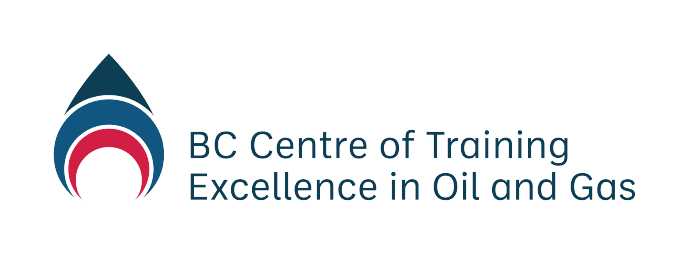-
Module 2.0 How to be Successful in this Course
-
Module 2.1 Introduction to Natural Gas
-
Module 2.2 The Natural Gas Industry in British Columbia
- Overview
- Learning Outcomes
- Natural Gas Science – The Simple Version
- Natural Gas Science – Chemistry
- Natural Gas Science – Physics
- Natural Gas Science – Units of Measurement
- Natural Gas Science – Geology
- Natural Gas Resources and Uses
- Oversight of the Natural Gas Industry
- Understanding Land Rights and Natural Gas
- Energy and the Future
-
Module 2.3 Upstream – Well Site Selection, Preparation and Drilling, Completion, Production, Water Recycling, and Reclamation
- Learning Outcomes
- The Upstream Sector – Extraction and Processing
- The Upstream Sector – Exploration and Site Selection
- The Upstream Sector – Preparation and Drilling
- The Upstream Sector – Completion
- The Upstream Sector – Production
- The Upstream Sector – Water Recycling
- The Upstream Sector – Reclamation
- Upstream Companies and Jobs in British Columbia – Companies
- Upstream Companies and Jobs in British Columbia – Industry Associations
- Upstream Companies and Jobs in British Columbia – Professional Associations
- New Vocabulary
-
Module 2.4 Midstream – Transportation, Processing, Refining
- Learning Outcomes
- The Midstream Sector
- The Midstream Sector – Processing Natural Gas
- The Midstream Sector – Liquefied Natural Gas
- The Midstream Sector – An Emerging Industry
- The Midstream Sector – Processing LNG
- The Midstream Sector – Proposed LNG Projects in British Columbia
- Transportation
- Midstream Companies and Jobs in British Columbia
-
Module 2.5 Downstream – Refining and Markets
-
Module 2.6 Health and Wellness in the Natural Gas Industry
-
Module 2.7 Safety
-
Module 2.8 Terminology and Communication
-
Module 2.9 Jobs and Careers
- Learning Outcomes
- Industry Outlook
- Technology is Changing Workforce and Skills
- Employment in the Natural Gas Industry
- Employment in the Natural Gas Industry – Types of Employment
- Employment in the Natural Gas Industry – Range of Jobs
- Employment in the Natural Gas Industry – High Demand Jobs and Occupations
- Occupational Education and Training
-
Module 3.0 How to be a Valued Employee
-
Module 3.1 Identifying Interests and Skills
-
Module 3.2 Looking for Employment in Natural Gas
-
Module 3.3 Applying for Employment in Natural Gas
Officially, Canada uses the metric system of measurement (litres, kilograms, metres, etc.), since converting from the imperial system (gallons, pounds, inches, etc.) in the 1970s. However, as you probably have experienced, there is significant variation
in the use of the two systems—by industry sector and amongst individuals—to the extent that it is not uncommon to see or hear one or the other, or even both systems used. The United States follows the imperial measurement system. Most other countries
use the metric system.
Volume
 Natural gas is typically measured by volume. The amount of energy in natural gas is proportional to the number of molecules in the gas, and the number of molecules in the gas changes under different temperatures and pressures; hence, the amount of energy in natural gas varies by volume depending on the temperature and level of pressure the gas is stored under.
Natural gas is typically measured by volume. The amount of energy in natural gas is proportional to the number of molecules in the gas, and the number of molecules in the gas changes under different temperatures and pressures; hence, the amount of energy in natural gas varies by volume depending on the temperature and level of pressure the gas is stored under.
Measuring volume
To ensure fair and accurate measuring of natural gas for the purposes of buying and selling, the standards for measurement are set by government—in Canada, the federal government.
In Canada, when natural gas is produced, transported, bought, or sold, the volumes are reported in metric units of cubic metres or metric tons. However, you may frequently see or hear volumes reported in imperial units of measurement (most often in news reports) such as cubic feet, barrels, and Btu.
For everyday consumption, cubic metres are far too large for measuring natural gas. For example, gasoline, diesel fuel, and other liquefied fuels are most often measured in litres. For reference, 1,000 litres = 1 cubic metre.
figure 4
Measurement Canada
Did you know that there is an entire federal government department responsible for setting standards for measurements?
Measurement Canada is responsible for ensuring that businesses and consumers receive fair and accurate measure in financial transactions involving goods and services. The agency develops and administers the laws and requirements governing measurement; evaluates, approves and certifies measuring devices; and investigates complaints of suspected inaccurate measurement.
Check it out at https://www.ic.gc.ca/eic/site/mc-mc.nsf/eng/h_lm00013.html

Video 1: Exploding Water Heater (4 minutes 12 seconds)
Learning Activity 1: Water and Pressure
Instructions 1. Watch Video 1 and answer the following questions.
- a) What was the water heater operating pressure? b) What was the pressure at the explosion time? c) What do you think will happen with the drilling pipes if pressure escapes the hole?
Comment: All water heaters have a pressure relief valve installed which prevents over pressuring of the water heater and subsequent explosions.
